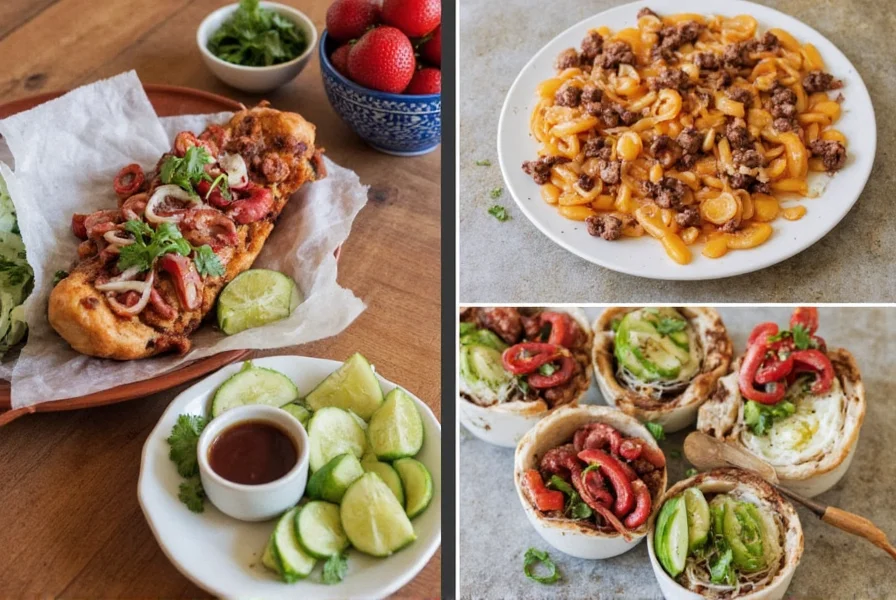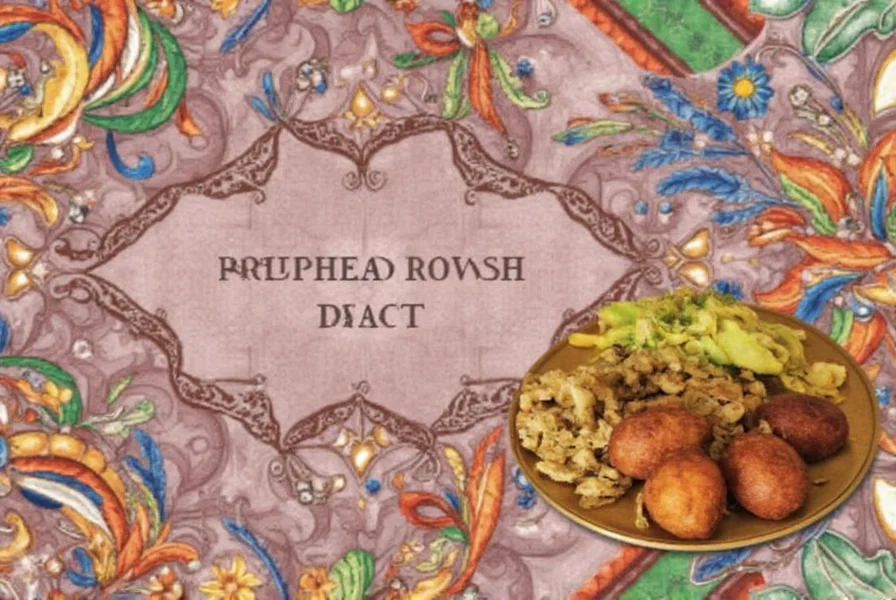Spice Routes & Samba: Exploring Brazilian Flavors Through Culture and Cuisine
When you think of Brazil, what comes to mind? Maybe it's the sizzling beats of Rio Carnival, the lush Amazon rainforest, or the golden beaches of Copacabana. But beyond the rhythm and scenery lies a country rich in flavor — a culinary tapestry woven with indigenous roots, African influence, European colonization, and Asian migration. In this blog post, we’ll dive deep into Brazilian spice traditions, exploring how culture shapes cuisine and how the right spices can transport your taste buds straight to the tropics.
Table of Contents
- Introduction
- A Taste of History
- Regional Spice Variations Across Brazil
- Essential Spices in Brazilian Cooking
- 5 Signature Dishes to Try at Home
- Buying Guide: Choosing Authentic Brazilian Spices
- Conclusion
Introduction: A Symphony of Spice and Culture
Brazil isn’t just about sun, sand, and samba — it’s also about bold flavors that tell stories. Each region boasts its own unique spice profile, from the fiery peppers of the Northeast to the delicate herbs of the South. Whether you're grilling skewers in the style of churrasco or simmering a hearty feijoada, the right blend of spices makes all the difference.
In this article, we'll guide you through the heart of Brazilian food culture, highlight key ingredients, offer cooking tips, and provide a practical buying guide for authentic spices. Let’s turn up the heat and explore what makes Brazilian cuisine so irresistibly flavorful!
A Taste of History: How Spices Shaped Brazilian Cuisine
Brazil's culinary journey began long before Portuguese colonization. Indigenous tribes used native spices like pimenta-do-reino (Brazilian pepper) and erva-cidreira (lemongrass) to season their dishes. When the Portuguese arrived in the 16th century, they brought black pepper, cinnamon, and cloves — spices previously only known in Europe through costly imports.
The arrival of enslaved Africans further diversified the flavor palette. Dishes like moqueca and caruru incorporated palm oil and dried shrimp — not just for flavor but for cultural identity and survival. Later waves of immigration from Japan, Italy, and Lebanon added new dimensions, such as ginger, basil, and sumac, which are now staples in many Brazilian kitchens.
Regional Spice Variations Across Brazil

| Region | Key Ingredients | Signature Flavor Profile | Popular Dishes |
|---|---|---|---|
| Northeast | Dried chili peppers, coconut, dendê (palm oil) | Smoky, spicy, tropical | Mocotó, Baião de Dois |
| Southeast | Black pepper, garlic, cumin | Robust, savory, meat-forward | Feijoada, Churrasco |
| South | Oregano, parsley, bay leaves | Herbaceous, clean, rustic | Vatapá, Pinhão cozido |
| North | Tucupi sauce, annatto, cilantro | Earthy, tangy, wild | Pato no Tucupi, Tacacá |
| Central-West | Pequi fruit, cassava flour, coriander | Woody, nutty, citrusy | Pesqueira, Pequi com galinha |
Essential Spices in Brazilian Cooking
While Brazilian cuisine is often celebrated for its fresh ingredients and bold proteins, the magic truly happens when spices enter the equation. Here’s a list of must-have spices for recreating authentic Brazilian flavors at home:
- Dendê (Palm Oil) – Adds a rich orange hue and nutty aroma to Bahian dishes.
- Cilantro – Used liberally across regions, especially in stews and sauces.
- Bay Leaf – Essential for slow-cooked beans and meats.
- Black Pepper – The backbone of seasoning in everyday meals.
- Cumin – Popular in grilled meats and rice dishes.
- Chili Peppers – Fresh and dried varieties bring heat, especially in the North and Northeast.
- Annatto (Urucum) – Natural colorant with mild peppery notes, used in regional stews.
5 Signature Dishes to Try at Home

Ready to cook like a local? These five recipes capture the essence of Brazilian cuisine using traditional spices and techniques:
- Feijoada: Black bean stew with pork, seasoned with bay leaf, garlic, and black pepper.
- Moqueca Baiana: Fish stew cooked in coconut milk and palm oil, flavored with cilantro and tomatoes.
- Picanha na Brasa: Flame-grilled beef top sirloin seasoned simply with coarse salt and optional cumin.
- Caruru: Fried okra dish made with dried shrimp, onions, and red pepper flakes.
- Frango com Quiabo: Chicken with okra, spiced with garlic, onion, and paprika.
Buying Guide: Choosing Authentic Brazilian Spices
If you’re shopping for Brazilian spices, authenticity matters. Here’s how to pick the best ones for your kitchen:
Top 5 Must-Have Brazilian Spices
| Spice/Product | Flavor Profile | Use Cases | Recommended Brands |
|---|---|---|---|
| Dendê Oil (Red Palm Oil) | Earthy, nutty, slightly sweet | Used in Bahian seafood dishes like Moqueca | Coamo, Belém do Pará, Yoki |
| Pequi Fruit | Woody, citrusy, aromatic | Essential in Central-West chicken dishes | Serrano, Amazônia Tropical, Frutal |
| Pimenta Biquinho | Mild heat with fruity notes | Great on cheese, salads, or in vinegar marinades | Donana, Casa da Pimenta, Mercadão das Pimentas |
| Manjericão (Basil) | Fragrant, peppery, slightly sweet | Common in fish dishes and rice | Hortelã, Jasmim, Frescália |
| Anis Estrelado (Star Anise) | Floral, licorice-like | Used in desserts and herbal teas | Salgari, Don Pantera, Terra Viva |
Where to Buy Authentic Brazilian Spices
- Ethnic Grocery Stores: Look for Latin American markets or stores catering to Afro-Brazilian communities.
- Online Retailers: Amazon, Mundo Latino, and World Market offer curated selections.
- Local Farmers’ Markets: Ask for organic or locally grown herbs like culantro or Mexican oregano.
Pro Tip: DIY Spice Blends
Make your own “Bahia Seasoning” mix by combining:
- 1 tsp smoked paprika
- ½ tsp ground cumin
- ¼ tsp ground coriander
- 1 tbsp crushed dried chili flakes
- 1 tsp sea salt
This versatile blend works well on grilled fish, chicken, or even roasted vegetables.
Conclusion: Embracing the Spice of Life
Brazil is more than just a place — it's a flavor adventure. From the smoky pimenta biquinho to the vibrant hues of dendê, every spice has a story rooted in history, geography, and community. Whether you're hosting a festive meal or experimenting in your kitchen, these spices open a door to one of the world's most colorful culinary cultures.
So why not spice up your next dinner with a little Brazilian flair? With the right ingredients and a touch of samba spirit, you can bring the warmth of Brazil right to your table.










 浙公网安备
33010002000092号
浙公网安备
33010002000092号 浙B2-20120091-4
浙B2-20120091-4